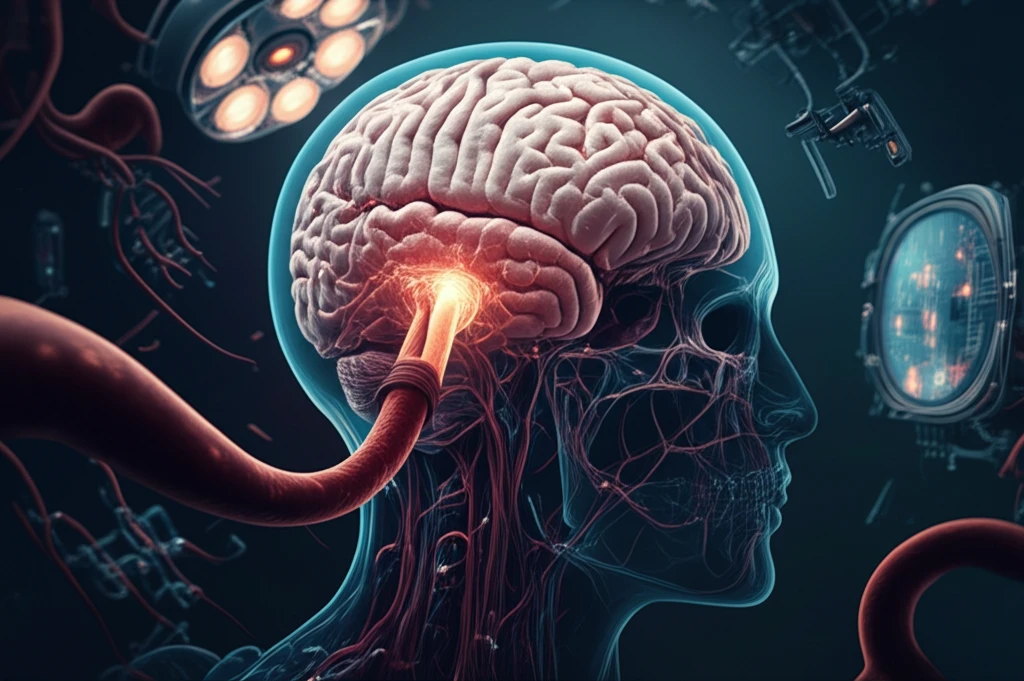
Unlocking the Secrets: A Modern Guide to Treating Giant Brain Aneurysms
"Navigate the complexities of giant intracranial aneurysms with our comprehensive guide to microsurgery and modern treatment options."
Giant intracranial aneurysms (GIAs), defined as those larger than 25 mm, present a unique and often daunting challenge in neurosurgery. These aneurysms, which can be saccular, fusiform, or dolichoectatic, account for approximately 5% of all cerebral aneurysms. Unlike their smaller counterparts, GIAs tend to appear later in life and are more prevalent in women. Their complex nature stems from wide, atherosclerotic necks, involvement of critical brain branches, the presence of thrombus within the aneurysm, calcified walls, and intricate anatomical structures.
The prognosis for untreated GIAs is grim, with mortality rates soaring to 68% within two years and 85% within five years of diagnosis. These lesions can manifest through various symptoms, including hemorrhage (subarachnoid hemorrhage (SAH), intracerebral hemorrhage (ICH), epistaxis, and carotid-cavernous fistula (CCF)), mass effect, thromboembolism, and, less commonly, seizures. In rare instances, GIAs are discovered incidentally during imaging for other conditions, highlighting the importance of awareness and proactive management.
While direct surgical clipping, aiming to exclude the aneurysm from cerebral circulation while preserving vessel patency and relieving mass effect, remains a preferred treatment method, it is not always feasible. Complex aneurysm anatomy, critical locations near vital neural structures, sclerotic parent vessels, intraluminal thrombus, and the presence of perforators often necessitate alternative approaches. This guide explores the modern strategies for treating GIAs, focusing on patient selection, microsurgical techniques, and the integration of endovascular and bypass procedures to optimize patient outcomes.
Navigating Treatment Options for Giant Intracranial Aneurysms

The decision to treat a GIA requires careful consideration of multiple factors. These include the patient’s overall health, age, specific aneurysm characteristics (location, morphology), and available expertise. Giant aneurysms, even those discovered incidentally, often warrant treatment due to their potentially devastating natural history. However, conservative management with careful observation may be appropriate for certain patients, such as those with isolated cranial nerve palsies caused by cavernous ICA aneurysms without severe pain.
- Microsurgical Clipping: Direct surgical clipping remains a cornerstone of GIA treatment, offering the potential for complete aneurysm exclusion.
- Endovascular Coiling: This less-invasive approach is often preferred for certain locations and patient conditions, aiming to occlude the aneurysm from within.
- Bypass Procedures: When direct clipping or coiling is not feasible, bypass surgery can reroute blood flow around the aneurysm, preserving critical brain perfusion.
- Flow Diversion: Newer techniques utilizing flow-diverting stents can alter blood flow dynamics, reducing stress on the aneurysm wall and promoting thrombosis.
A Patient-Centric Approach
Treating giant intracranial aneurysms requires a comprehensive and individualized approach. The decision to intervene, the choice of treatment modality, and the specific surgical techniques employed must be tailored to the patient's unique circumstances, aneurysm characteristics, and available expertise. By integrating advanced microsurgical techniques, endovascular interventions, and a thorough understanding of cerebrovascular anatomy, specialized centers can offer hope and improved outcomes for individuals facing these complex and life-threatening lesions.
